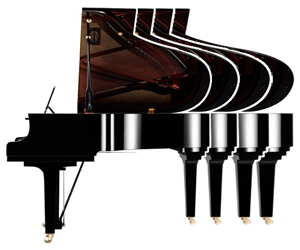 I’ve heard this statement many times “I don’t want a concert grand, I’m looking for more of a baby grand”. To many, this is a completely normal statement. For those who have been around pianos, the translation is more like this: I’m not interested in a limousine, I’m looking for a subcompact car”. I believe that there is a lack of knowledge why the former statement is prevalent. People either see a massive piano on a stage or they see a piano in a home. VOILA! 2 sizes of pianos – concert grand and baby grand. When you start to know the business of pianos however, there are actually more like 6 basic sizes of grands and 4 standard sizes for upright pianos (also known as verticals).But there are so many different sizes of pianos. How do you know what to buy?
I’ve heard this statement many times “I don’t want a concert grand, I’m looking for more of a baby grand”. To many, this is a completely normal statement. For those who have been around pianos, the translation is more like this: I’m not interested in a limousine, I’m looking for a subcompact car”. I believe that there is a lack of knowledge why the former statement is prevalent. People either see a massive piano on a stage or they see a piano in a home. VOILA! 2 sizes of pianos – concert grand and baby grand. When you start to know the business of pianos however, there are actually more like 6 basic sizes of grands and 4 standard sizes for upright pianos (also known as verticals).But there are so many different sizes of pianos. How do you know what to buy?
First of all, let’s look at basic groupings of sizes that have evolved over time and next, we will take a look at differences between the categories in both grands and upright pianos and why consumers purchase different sized pianos.
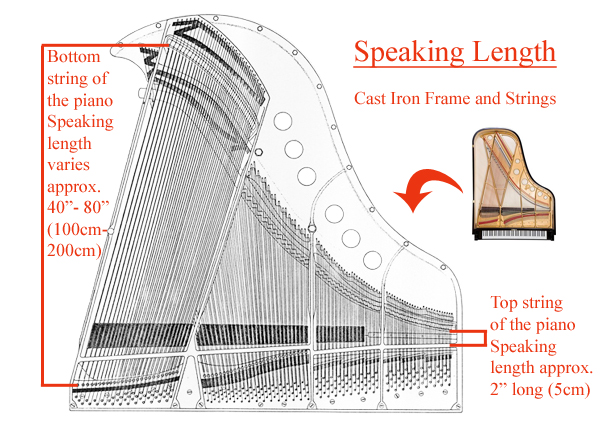 It’s true. I got my ruler out and measured the strings of the highest note on several pianos. From the largest piano to the smallest, the top note “speaking length” is only around 2 inches long (5cm). (Speaking length is the resonating portion of the piano string.) Why are those strings similar on any piano? It has to do with something called scale. There is an optimal length and thickness of string to make the highest notes of the piano resonate. It just so happens that for all pianos, the top strings are all rather short. The lowest notes however are a completely different story. This is why pianos are different lengths (for grands) and heights (for uprights). Starting from the very highest note of a piano, as you proceed down towards the middle and then eventually the bottom bass notes, the strings stretch towards the full length of the instrument. When you measure a grand piano from the tip to tail (front of the keyboard to the end of the piano), they range from 5 feet long (1m50) to well over 9 feet long (2m75) because the bottom bass strings span the distance. Upright pianos range from 40” tall (110cm) to a 52” tall (132cm). Take a look at the diagram on speaking lengths. While the bass strings span most of the piano, it’s also important to note that the string lengths are tapered so that even by the middle portion notes of a piano, lengths vary drastically. But what’s the advantage of a long piano over a short one? Conversely, why not just have a short piano? Why have a behemoth of a piano in your space?
It’s true. I got my ruler out and measured the strings of the highest note on several pianos. From the largest piano to the smallest, the top note “speaking length” is only around 2 inches long (5cm). (Speaking length is the resonating portion of the piano string.) Why are those strings similar on any piano? It has to do with something called scale. There is an optimal length and thickness of string to make the highest notes of the piano resonate. It just so happens that for all pianos, the top strings are all rather short. The lowest notes however are a completely different story. This is why pianos are different lengths (for grands) and heights (for uprights). Starting from the very highest note of a piano, as you proceed down towards the middle and then eventually the bottom bass notes, the strings stretch towards the full length of the instrument. When you measure a grand piano from the tip to tail (front of the keyboard to the end of the piano), they range from 5 feet long (1m50) to well over 9 feet long (2m75) because the bottom bass strings span the distance. Upright pianos range from 40” tall (110cm) to a 52” tall (132cm). Take a look at the diagram on speaking lengths. While the bass strings span most of the piano, it’s also important to note that the string lengths are tapered so that even by the middle portion notes of a piano, lengths vary drastically. But what’s the advantage of a long piano over a short one? Conversely, why not just have a short piano? Why have a behemoth of a piano in your space?
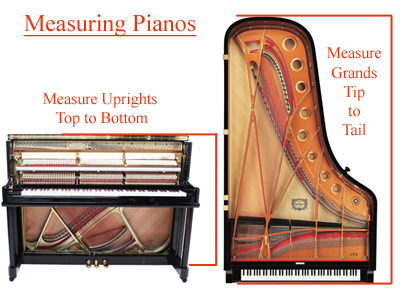 “It’s lost on me. I can’t hear the difference between pianos.”
“It’s lost on me. I can’t hear the difference between pianos.”
Me: “Really? But can you hear the difference the quality of a clock radio and large stereo speakers?”
“Well yes of course”
If you haven’t heard the difference in pianos, you MUST hear different sizes with your own ears. Take yourself to a piano store and listen. Have someone play various sizes of instruments. The usual response with those who have never been exposed usually reply “Wow those are really different sounding”. In the decades I’ve been around piano buyers, I’ve never once had a customer say “They sound all the same”. People with no musical experience can easily hear depth of tone.
What is it that is so different? That’s a bit of a loaded question because piano composition is the attention to a 1000 details but for the purposes of this article, we’re going to focus in on the size of the piano. There are 2 main factors at work here: One is that longer strings bring about depth of tone and the second is a difference in power and output.
All About that Bass – Depth
The foundation, the body of the note, the pitch we hum when we describe a note on the piano is called the fundamental. But there are other vibrations going on in any piano. When the hammer strikes the string, it sets in motion not only the fundamental but other frequencies known as partials or harmonics. These partials also constitute piano tone without which we would not perceive the full body of sound of the instrument. But it is generally agreed that longer stringed pianos (in both grand and upright) deliver better fundamental with more pleasing harmonic structure. Piano tone that is often described as “deep” quite often comes from longer stringed instruments. Does that mean that everyone should be buying huge pianos? HAHAAA YES! I have a saying “You can never have enough piano”. I’m being facetious of course. But I encourage you to consider different sizes of pianos when making purchasing decisions. When you stretch piano strings across 5 feet (150cm) or 9 feet (275cm), structurally they are very different. Longer pianos, with thousands of pounds more string tension, require more framework and structural integrity. Think about a bridge: To span a short distance, it is critical to build for structure yes but it is more critical if you have to cover a longer distance. Larger instruments are simply more costly to build. They require a greater framework and more iron etc. Subsequently they are pricier instruments.
Piano size then can be reduced in a nutshell to this: Larger instruments are better sounding but need to be married to the physical size restraints of the space and budget of the buyer (because they are more costly). Over time, sizes have standardized to meet requirements. You can search pianos by size on Piano Price Point HERE. In the uprights, there are roughly 4 heights of pianos available today: 42”, 45” 48” and 52”. And yes there are pianos being made in between each of these categories but a large portion of piano sales have evolved to these sizes. Why do people buy smaller more compact pianos? Predominantly it’s due to space and budget. The smallest upright piano many refer to as a console piano. Speaking length in the bass ranges from maker to maker but bottom strings are about 40-44” long. Smaller pianos also have smaller soundboard area and physically don’t output as big a sound as taller pianos. Console pianos are comfortable in any home or living environment. Studio pianos are the next larger piano category (usually about 45” tall). Speaking length can be 43-46” long. Speaking lengths vary depending on the angle of bass strings, how wide the pinblock area is etc. Many choose this size of instrument because it is still comfortable to look over when sitting at the piano. For example, if you’re playing for a choir, you can see over the top of a studio piano. Both 48” and 52” tall pianos I refer to as professional sizes. These pianos have full sized actions (mechanical parts). Console pianos have smaller actions while studio pianos sometimes have full actions and sometimes not – depending on the maker. The professional 48-52” tall pianos have speaking lengths ranging from 44”- 48” for lowest bass strings.
If you are thinking about grand vs. upright for sound, these two pianos are similar in speaking length to the smallest two grand sizes. (See Chart Below) If you’re looking for comparable lengths of bass strings, the 48” and 52” pianos are roughly equivalent to 5’1” grand (150cm) and 5’7” (170cm). These taller upright pianos deliver greater depth of tone than shorter pianos but also demand their presence in a room.

The chart above shows bottom bass string lengths for various piano sizes. The heights and lengths are shown beside the appropriate icon and the center line shows inches of bass string lengths. I didn’t realize until doing some measurements and research just how wide this range is. I find the visual of this both interesting and helpful.
When it comes to grands, there are roughly 6 sizes: Baby grand (5’0 or 1.50m), Medium Grand (5’7” or 1.75m), Large Grand (6’1” or 1.90m), Extra Large Grand (6’8” or 2.00m), Semi-Concert (7’4” or 2.25m) and Concert Grand (9’ or 2.75m). Baby grands, being the smallest of any grand fit comfortably into any home. They also have the shortest strings. They are usually priced competitively and many, many houses have baby grands. Medium and Large grands traditionally have been the most sold, most sought after for household grand because they strike the balance between budget, size and sound. Medium and Large grands also work well for institutional small to medium sized venues. Extra Large grands and Semi-Concert grands are perfect for larger venues or people like myself who say “you can never have enough piano” 😀 In reality, they output substantial dynamic range but usually too much for most people’s liking in a home environment. The Concert grand size is appropriately named to fit in a concert hall. They are grandiose. If you have never played one, you should.
If you’re thinking about buying a piano, first things first – listen. Don’t start with the tape measure. Go to a store and do some listening. THEN determine what is pleasing to you in tone but also in budget and size. Like never before, you can find a piano that fits your needs. There are pianos at every price point. Don’t be in a hurry but spend some time familiarizing yourself with not only different brands but different sizes from the same maker. They’re quite different from top to bottom. After all, you’re the one who will end up with the instrument in your space for years to come.
More Piano Articles

You’ve been playing your piano for years now and the time has come to seriously consider downsizing the house and move into a condo. But what do you do with the piano? You love your piano and can’t imagine life without it and besides, you absolutely hate the idea of playing a digital keyboard. Many people don’t know that you can add digital functionality without compromising your existing piano. Yes, it is completely possible to ...
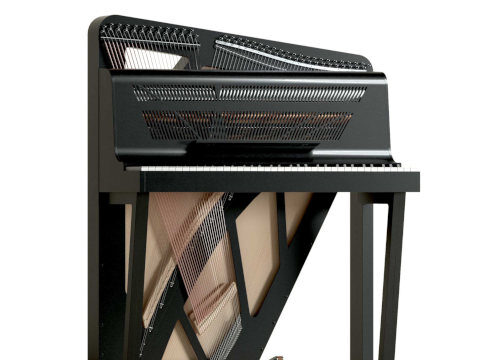
Many years ago, I remember seeing a piano in a museum similar to the one shown above (built in 1787 by Christian Gottlob Hubert. On display at Germanisches Nationalmuseum - Nuremberg, Germany). I have often wondered why acoustic portable pianos never really took off. Although we've seen more portable keyboard instruments like harpsichords, accordions or electronic keyboards, they operate completely different from a traditional piano in that they either pluck the strings, use air with ...

This was the first year since covid that the National Association of Music Merchants (NAMM) trade show was back to its regular January date and, in fact the first show where it felt back to normal. How was it? To answer that, I'm going quickly review the piano market over the last few years. Piano sales boomed during covid. Think about it - everyone was at home and with time on their hands, many turned ...
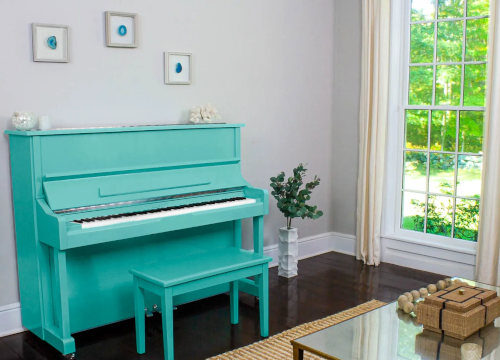
I’ve often wondered when the business model of piano buying would start to change. It seems like we feel comfortable purchasing everything from toothpaste to tires online and yet pianos are one thing that you still buy in a store. Well some of that is about to change. After speaking with Larry Caruso from Caruso Piano, they’re launching a brand of piano made specifically for online ordering. It’s called
Sonnova. I recently had the pleasure ...
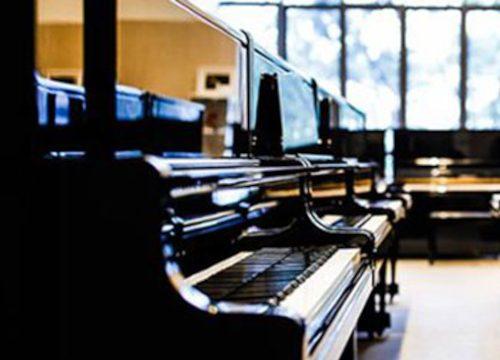
The thought of buying a piano can be exciting but it can also be a bit intimidating or daunting, especially if you don’t know anything about them. But have no fear, because at Piano Price Point, we’ve compiled so much of the data and written articles to make your job easier. To narrow down the scope of buying a piano, you first need to decide what kind of piano you’re looking for. Ask yourself these ...

Money, apparently
does grow on trees or at least in ancient times it did. It's been recorded that rare tree sap was used as a form of payment for tax because it was deemed so valuable. This sap from the tree was harvested and refined into lacquer with incredible clarity and sheen. Many thousands of years ago, it was reserved for imperial palaces, religious temples and shrines. Early
examples have been dated to 7000BC. It ...